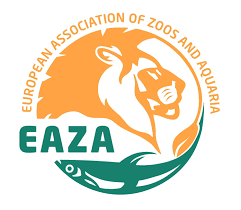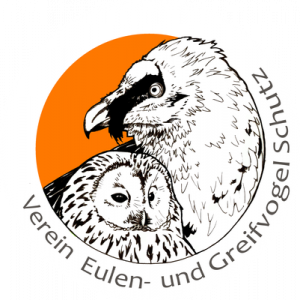May 24, the European Day of Parks, was a special day in the Bavarian Alps, with two young Bearded Vultures released in Berchtesgaden National Park, at the Klausbach Valley. A fantastic celebration of the 45th anniversary of the National Park! In this article, we introduce you Sisi and Nepomuk, the juvenile Bearded Vultures (Gypaetus barbatus) released.

Two Bearded Vultures released in Berchtesgaden National Park
A ten-year project is taking place to bring the species back to the Bavarian Alps and, thus, consolidate the Central European and Alpine Bearded Vulture population and strengthen the connection with Asia. The first two Bearded Vultures released in Berchtesgaden National Park, Bavaria and Wally, in 2021, were a historical turning point for Germany, where the species has been extinct for over 140 years. In 2022, another two Bearded Vultures, Dagmar and Recka, were released in the same area.
The project is the result of a strong collaboration between LBV and the Berchtesgaden National Park, with the support of the Bearded Vulture Captive Breeding Network, coordinated by us at the Vulture Conservation Foundation (VCF) on behalf of EAZA’s EEP (Bearded Vulture EEP), and the International Bearded Vulture Monitoring Network, also coordinated by the VCF.

Sisi and Nepomuk: two new Bearded Vultures in Berchtesgaden National Park
Both Bearded Vultures released hatched in captivity in Austria: Sisi, the female, hatched in the Alpine Zoo in Innsbruck, whilst Nepomuk (male) hatched in the Richard Faust Bearded Vulture Breeding Centre in Haringsee, close to Vienna. However, as the parents of Nepomuk laid another egg and due to cainism (an instinctive behaviour to eliminate the siblings, normal to Bearded Vultures), only one chick would survive, and therefore, Nepomuk was transferred to Nuremberg Zoo. When it turned ten days, human keepers transported Nepomuk, who was welcomed and reared by a foster pair that was unable to breed this year.
Nepomuk descended from an important lineage and was supposed to remain in captivity to ensure the genetic pool within the Bearded Vulture EEP. BG 1168, which was supposed to be released, showed difficulties in the plumage development, and Nepomuk replaced it. The name was chosen by the Berchtesgaden National Park team and through an online vote, in collaboration with Radio Bayern 2.

Sisi is the first chick of Romeo and Julia; both hatched in 2014 and arrived at the Alpine Zoo with only three months, where they were successfully paired. Romeo hatched at the Chomutov Zoo in the Czech Republic, and Julia hatched at Vallcalent Breeding Centre in Spain. Since 2020, they have been making breeding attempts, with one egg laid each season but unfortunately without success. In 2023, for the first time, the pair could lay two eggs; Sisi hatched, but the second egg was not fertile. The name Sisi was given by two long-time donors of LBV, representing the connection between Bavaria and Austria.

What happens before the release?
To follow their movements once they reach flight maturity, each bird is fitted with a lightweight GPS transmitter before the release. Moreover, each bird released gets a code on their rings, and some of its feathers are bleached to allow their identification in the wild. The pattern of the bleached feathers is unique to each individual, following a European scheme overseen by the International Bearded Vulture Monitoring Network (IBM), coordinated by the VCF.


Mimicking the natural way of fledging
At the time of release, Sisi and Nepomuk could not fly yet. Making their first flights will take at least 4-5 weeks and will require intensive practice from both, to fully develop their wing muscles. Both Bearded Vultures have been transported in specially designed boxes to the artificial nests previously prepared with spruce branches and sheep’s wool. Placed at 1300 metres of altitude in the Klausbach Valley, the nests are hardly accessible – a challenge for the small team of experts and park rangers that went up the tiny track on the steep rocky slopes. After the release, the group left immediately to avoid human contact.

The nests mimic the species’ wild nests and their natural fledging process. This methodology, which has been proven very efficient in other release projects in the Alps, aims that in 8-10 years, once they reach sexual maturity, Sisi and Nepomuk return to the same territory to breed. For now, they will be fed from afar and monitored around the clock, thanks to the infrared cameras placed in the nests, which also help to act swiftly in case the monitoring team detects any irregularities.
Watch the live streaming here
International Cooperation and local involvement: the ingredients of a successful reintroduction programme
Thanks to the Bearded Vulture EEP, a network of over 40 institutions including Zoos, specialised breeding Centres, recovery and rehabilitation centres and private collections, every year, dozens of chicks successfully hatch and are reared in captivity to support reintroduction and restocking projects ongoing in Europe. Àlex Llopis, VCF Captive Breeding specialist and coordinator of the EEP, allocates the chicks according to their descendants and local needs.
The release ceremony on May 24 gathered many Vulture enthusiasts from Germany and Austria, NGOs and politicians. It was an opportunity for the deputy district administrator and the Bavarian Ministry of the Environment to reaffirm their commitments to bring the species back to Bavaria. Powered by solid communications, the news spread across the Bavarian media, making it a remarkable event for many nature enthusiasts and the wider society.
Bearded Vulture, the missing link in the Eastern Alpine Mountain
The Bearded Vulture was driven to extinction in the Alps during the 20th Century. In the late 1970s, pioneers from all Alpine countries initiated a reintroduction to bring the species back. The first birds were released in 1986 at Hohe Tauern National Park (Austria), and in 1997 the first breeding pair successfully raised a chick in the wild in France.
Today, there are between 250 and 300 Bearded Vultures across the Alps, including 61 breeding pairs. With the releases in 2021 in the Bavarian Alps, Germany became the fifth country to join this successful reintroduction project, an important milestone to promote the geographical expansion of the species towards the east and boost conservation measures in the region as a whole.

We wish Sisi and Nepomuk good luck!
Source: LBV












